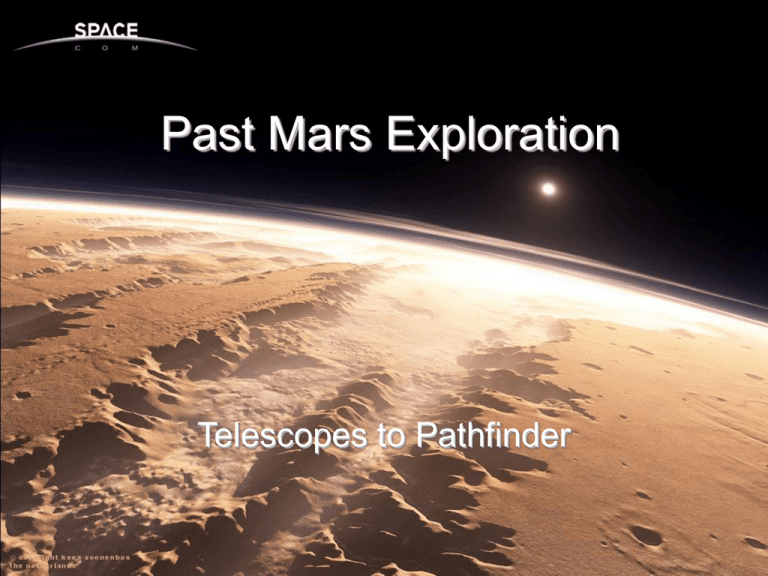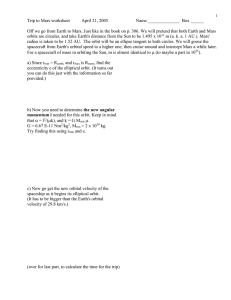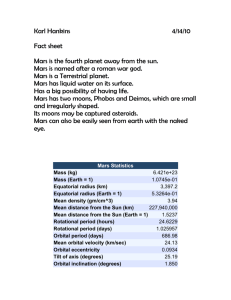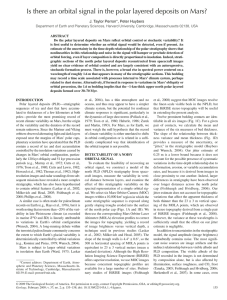Planetary Exploration Projects
advertisement

Past Mars Exploration Telescopes to Pathfinder The Beginnings • Tycho Brahe studies Mars’ motion to support Copernican view of the Solar Sytem • Kepler used this to lay the foundations for his three laws of motion • Galileo first to observe Mars with a telescope in 1609 Canals on Mars? • Schiaparelli observes Mars in 1877 and sees “canali” • This inspires many, including Percival Lowell to observe Mars. A Reality Check • Mariner 4 did the first fly by in 1965 and sent back pictures and data, including the following: Then On to Viking • Two orbiters and landers arrive in Martian Orbit in 1976 Mars Global Surveyor • Arrives in orbit in 1996 and aerobrakes into a circular orbit over a period of two years Pathfinder 1997 Spirit and Opportunity Mars Statistics • Mass (kg) 6.421e+23 Mass (Earth = 1) 1.0745e-01 • Equatorial radius (km) 3,397.2 Equatorial radius (Earth = 1) 5.3264e-01 • Mean density (gm/cm^3) 3.94 • Mean distance from the Sun (km) 227,940,000 • Mean distance from the Sun (Earth = 1)1.5237 • Rotational period (hours) 24.6229 • Rotational period (days) 1.025957 • Orbital period (days) 686.98 • Mean orbital velocity (km/sec) 24.13 • Orbital eccentricity0.0934 • Tilt of axis (degrees) 25.19 Orbital inclination (degrees) 1.850 • Equatorial surface gravity (m/sec^2) 3.72 • Equatorial escape velocity (km/sec) 5.02 • Visual geometric albedo0.15 • Magnitude (Vo)-2.01 Minimum surface temperature-140°C Mean surface temperature-63°C Maximum surface temperature 20°C Atmospheric pressure (bars) 0.007 Atmospheric composition Carbon Dioxide (C02) Nitrogen (N2) 95.3200% 2.7000% Argon (Ar) Oxygen (O2) Carbon Monoxide (CO) 1.6000% 0.1300% 0.0700% Water (H2O) 0.0300%



